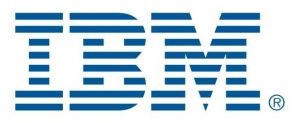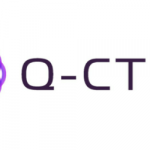Quantum News Briefs November 9: Fujitsu Develops Quantum/HPC Hybrid Computing Tech; “Crédit Mutuel Alliance Fédérale Launches Quantum Computing Readiness Discovery Phase w IBM to Establish Quantum Capability in France”, Forbes Council’s “13 Risks That Come With The Growing Power Of Quantum Computing” + MORE

Quantum News Briefs November 9 begins with announcement that Fujitsu Develops Quantum/HPC Hybrid Computing Tech followed by “Crédit Mutuel Alliance Fédérale Launches Quantum Computing Readiness Discovery Phase with IBM to Establish Quantum Capability in France”. Third is the Forbes Council’s “13 Risks That Come With The Growing Power Of Quantum Computing” + MORE.
*****
Fujitsu Develops Quantum/HPC Hybrid Computing Tech
 Fujitsu has announced the development of quantum/HPC hybrid computing technology to optimize workload selection for customers. Quantum News Briefs summarizes the November 8 announcement below.
Fujitsu has announced the development of quantum/HPC hybrid computing technology to optimize workload selection for customers. Quantum News Briefs summarizes the November 8 announcement below.
The new AI-based software, which serves as a precursor to a future computer workload broker technology, automatically selects from different next-generation computing platforms to offer the optimal solution to customers’ problems based on parameters including calculation time, calculation accuracy, and costs.
The new technology leverages the power of Fujitsu’s world top-class 39-qubit quantum simulator and the “FUJITSU Supercomputer PRIMEHPC FX 700,” equipped with the same A64FX CPU that powers supercomputer Fugaku, combining and selecting the optimum calculation method for customers’ quantum chemical calculation problems. Crucially, the technology allows users without specialized knowledge to use quantum simulators and HPC technology to provide effective solutions to real-world problems.
Moving forward, Fujitsu will verify the effectiveness of this technology and further develop it, with the aim of establishing a new computing workload broker technology in the field of quantum chemical calculations by fiscal 2023. Fujitsu will further continue to develop computing platforms that can be used by anyone without the need for expertise by adding services to Fujitsu Computing as a Service (hereinafter “CaaS”), Fujitsu’s service portfolio to deliver customers access to world-leading computing technologies via the public cloud.
Click here to read the announcement in entirety.
*****
Crédit Mutuel Alliance Fédérale Launches Quantum Computing Readiness Discovery Phase with IBM to Establish Quantum Capability in France

IBM Quantum Network member Crédit Mutuel Alliance Fédérale and IBM today announced that they have started the discovery phase of an engagement to include exploring applicability of quantum computing to banking and insurance use cases and development of a proof of concept and have started workforce development.
This engagement marks the first IBM Quantum Network enterprise collaboration in France and will first upskill Crédit Mutuel employees with the quantum computing expertise in the open source Qiskit software development kit and applying quantum algorithms to grow quantum expertise within Crédit Mutuel’s teams and lay the groundwork for organizational readiness to take full advantage of quantum technology.
Crédit Mutuel’s employees will have access through the IBM Quantum Premium Plan to the best of IBM’s quantum technology and Qiskit Runtime as a service, as well as IBM’s quantum and industry domain expertise, to help progress potential quantum use case applications in the financial services realm.
“We made a winning bet with artificial intelligence six years ago, and we are now convinced that, while the technology is emerging, now is the moment for our quantum journey to start with IBM, to ensure our clients and employees will be the first in France to benefit from quantum. We are convinced that it will greatly improve the quality of service to our customers and members,” said Nicolas Théry, President of Crédit Mutuel Alliance Fédérale, and Frantz Rublé, President of Euro-Information.
*****
13 Risks That Come With The Growing Power Of Quantum Computing
A Forbes Council member has compiled the possible 13 risks of the rapid growth of quantum computing that must be considered, and governments and industries must begin the work of devising solutions. Quantum News Briefs summarizes the risks below that were compiled from 13 members of Forbes Technology Council.
1. Modern Encryption Methods Will Be Rendered Useless
2. Web Interactions Will Be At Risk
3. DNNs Will Be More Difficult to Evaluate
4. Some Nation-States Could Be More Vulnerable In Warfare
5. Encrypted Data Can Be Harvested Now For Exploitation Later
6. There May Be HR-Related Impacts
7. The Digital Divide Could Grow Exponentially
8. Organizations May Struggle To Find Needed Helium
9. Blockchain Technology’s Algorithms Could Be Cracked
10. The Costs May Be Prohibitive For Most Organizations
11. Businesses May Have To Upgrade Or Be Left Behind
12. There Are Security Vulnerabilities That Haven’t Even Been Discovered Yet
13. Finding Relevant Use Cases May Be Difficult
Click here to read original article in entirety.
*****
Max Planck Institute of Quantum Optics pioneer the integration of eribium atoms into a siicon crystals
A team of researchers at the Max Planck Institute of Quantum Optics (MPQ) has pioneered the integration of erbium atoms with special optical properties into a silicon crystal. The atoms can thus be connected by light at a wavelength that is commonly used in telecommunications. This makes them ideal building blocks for future quantum networks that enable calculations with several quantum computers, as well as the secure exchange of data in a quantum internet. Since the new experimental results were achieved without sophisticated cooling and are based on established methods of semiconductor production, the method appears suitable for large networks.
The new technology relies on erbium atoms that are implanted into the crystal lattice of silicon under very specific conditions. “We knew from earlier experiments that erbium has good optical properties for such an application,” says Dr. Andreas Reiserer, head of the Otto Hahn Quantum Networks research group at MPQ: The atoms of this rare-earth element emit infrared light at a wavelength of around 1550 nanometers—the spectral range used for data transport in optical fiber cables. It exhibits only low loss during propagation in a light-conducting fiber.
“In addition, the light emitted by erbium has excellent coherence,” Reiserer notes. This means that individual wave trains are in a stable phase relationship to one another—a prerequisite for the storage and transmission of quantum information. “These characteristics make erbium a prime candidate for realizing a quantum computer—or for being used as an information carrier in a quantum network,” Reiserer says.
*****
Sandra K. Helsel, Ph.D. has been researching and reporting on frontier technologies since 1990. She has her Ph.D. from the University of Arizona.
























